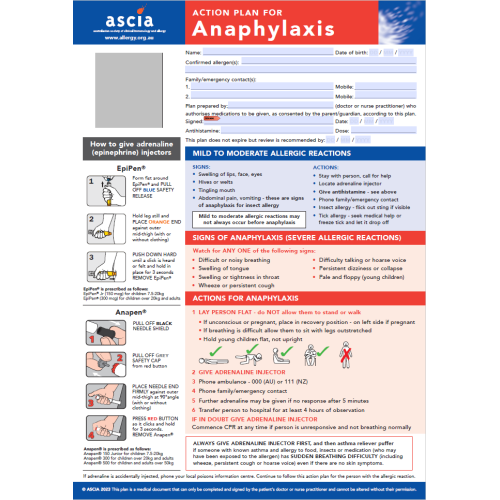On this page
What is latex allergy?
Natural rubber latex comes from the sap of the rubber tree (Hevea brasiliensis). Some people can become allergic to some of the proteins in natural rubber latex, causing them to have allergic reactions to latex products.
Latex may be found in many products, including:
- Balloons
- Tyres
- Shoes
- Baby dummies or teats
- Rubber toys
- Grips on tools
- Sporting equipment
- Rubber bands
- Washing up gloves
- Condoms
- Underwear elastic
- Goggles
It is also a common part of medical and dental equipment, such as:
- Disposable gloves
- Some products used for wound care
- Rubber dams
- Tubing
- Catheters
Please note that the Therapeutic Goods Administration (TGA) issued a warning in 2021 stating that the herbal ingredient Eucommia ulmoides, derived from the Eucommia ulmoides plant, contains naturally occurring latex. In Australia, Eucommia ulmoides (also known as Du-Zhong or Tu-chung) is allowed for use in listed medicines. Taking medicines containing this Chinese herb may cause an allergic reaction in some people with latex allergy. For more information click here.




Who is at risk of latex allergy?
The risk of developing latex allergy increases with frequent exposure. Those who are at greater risk include:
- Healthcare workers who have high exposure to latex gloves in their work
- People who have had multiple operations, especially children with spina bifida
- People who work in the rubber industry.
If people with latex allergy are exposed to latex during a dental or medical procedure where latex gloves are used, then an allergic reaction may occur. Latex-free gloves are readily available and will be used for any procedure on a latex–allergic person. Most medical equipment now comes latex-free.
Some proteins in latex are also present in foods
People with latex allergies may also have allergic reactions to certain foods that have similar proteins to those found in latex. Some of the foods which some people with latex allergy may also react to are:
- Avocado
- Kiwifruit
- Pineapple
- Banana
- Melons
- Tomatoes.
Not all people with latex allergy have reactions to foods. Speak with your doctor about foods that cause risk if you have latex allergy.
What reactions can I have to latex?
People can react to latex products in different ways:
Allergic reactions
- Allergic contact dermatitis
- This can be caused by a sensitivity to chemicals used in the manufacture of the rubber products or direct contact with the latex protein.
- This causes an eczema-like reaction, most commonly on the hands but also at other places where the rubber product touches the skin.
- While allergic contact dermatitis can be very uncomfortable, this type of reaction does not cause anaphylaxis or symptoms of an immediate allergic reaction.
- It usually occurs 12-48 hours after contact with latex.
- Immediate allergic reactions
- Contact: Itching, hives, or swollen lips, face can occur after contact with latex products.
- Inhalation: Latex can be inhaled when powdered latex gloves are changed.
- People with immediate type allergies to latex may have anaphylaxis when latex is absorbed through the mucous membranes such as the nose, mouth, eyes, throat or internally through the vagina or rectum, or during a surgical procedure.
Non-allergic reaction
- Irritant dermatitis
- Irritant dermatitis is the most common adverse reaction to latex.
- Those who frequently wear latex gloves as part of their occupation may develop irritant hand dermatitis, which results from heat, sweating, and friction while wearing the gloves. This is not an allergic response.
Importance of treating dermatitis symptoms
Although allergic contact dermatitis and irritant dermatitis are not dangerous, it is important to treat the damaged skin. If latex products continue to be used while skin is damaged, it may lead the development of an immediate type of allergy and risk of anaphylaxis.
Signs and symptoms of anaphylaxis
Learn about the signs and symptoms of allergic reactions, and the difference between a mild or moderate reaction and a severe reaction (anaphylaxis).
Diagnosis and Management
Latex allergy is usually diagnosed by a person’s history with the risk factors listed above and confirmed with blood and skin tests performed by an allergy specialist.
The only effective treatment for latex allergy is avoidance. If the allergy is severe, the person should:
- Have an adrenaline (epinephrine) device and ASCIA Action Plan completed by their allergy specialist.
- Wear a medical identification bracelet or similar warning.
- Tell any treating doctor or dentist that you have a latex allergy.
ASCIA Action Plan for Anaphylaxis
The ASCIA Action Plan for Anaphylaxis is for people who have been prescribed an adrenaline (epinephrine) device. It outlines:
- Which allergens to avoid
- Signs of mild to moderate and severe allergic reactions
- Actions to take
- How to give an adrenaline device
- Emergency contact details
The ASCIA Action Plan for Anaphylaxis should be stored with a person’s adrenaline device.
Related information
More information
For more information on latex allergy from the the Australasian Society of Clinical Immunology and Allergy (ASCIA) click here

